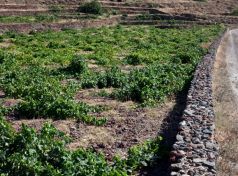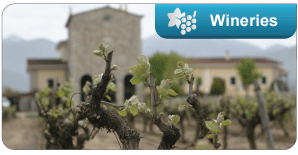The vineyards of the Aegean islands
The vineyards of the Aegean islands, excluding Crete, cover thousands of acres where native cultivars are grown almost to the exclusion of other varieties. It should come as no surprise that the huge expanse of seawater surrounding the islands has a positive impact on the island`s coastline vineyards. In the northern Aegean, the white Muscat varieties—including Muscat of Alexandria— dominate while, in the southern Aegean region, comprised of the Cyclades and the Dodecanese, the main varieties are Assyrtiko, Athiri, Monemvassia and the red variety of Mandilaria, together with small amounts of many local varieties. The strong winds which sweep over the islands throughout the growing season, the rugged and often inhospitable terrain, and the poor and barren soil with its minimal water resources have led to the prevalence of the traditional goblet system for pruning and training vines. To a great extent, viticulture on the islands continues to use traditional methods and mechanical cultivation is used in only few vineyards. One such example of traditional methods are the tiered terraces (pezoules) built as a way to avoid soil erosion and retain the precious little rainwater. The unique volcanic terroirs of Santorini hold a prominent position among the vineyards of the Aegean islands, as do those of the islands of Paros and Rhodes. Elsewhere in the archipelago, Samos and Lemnos have been famous since antiquity for their sweet wines.



